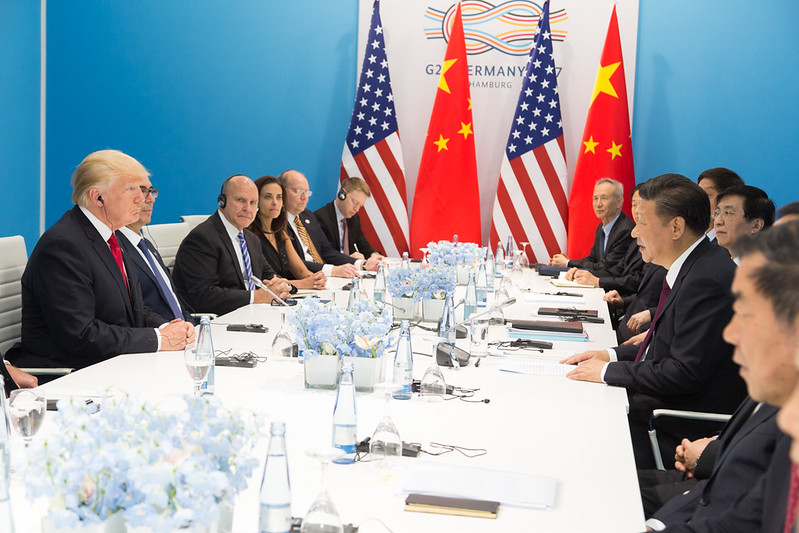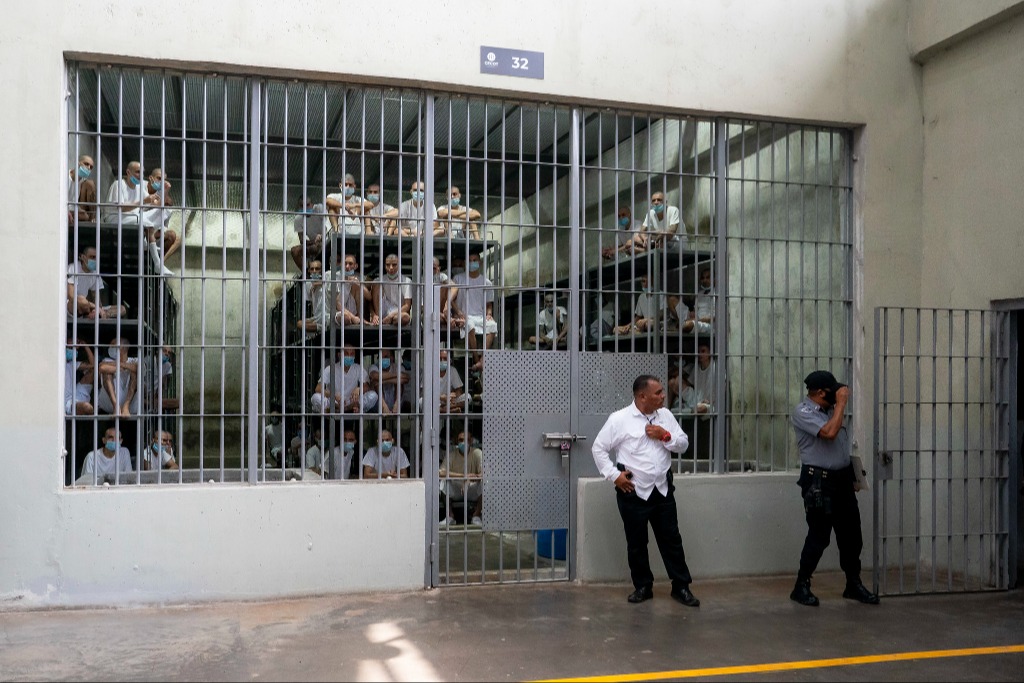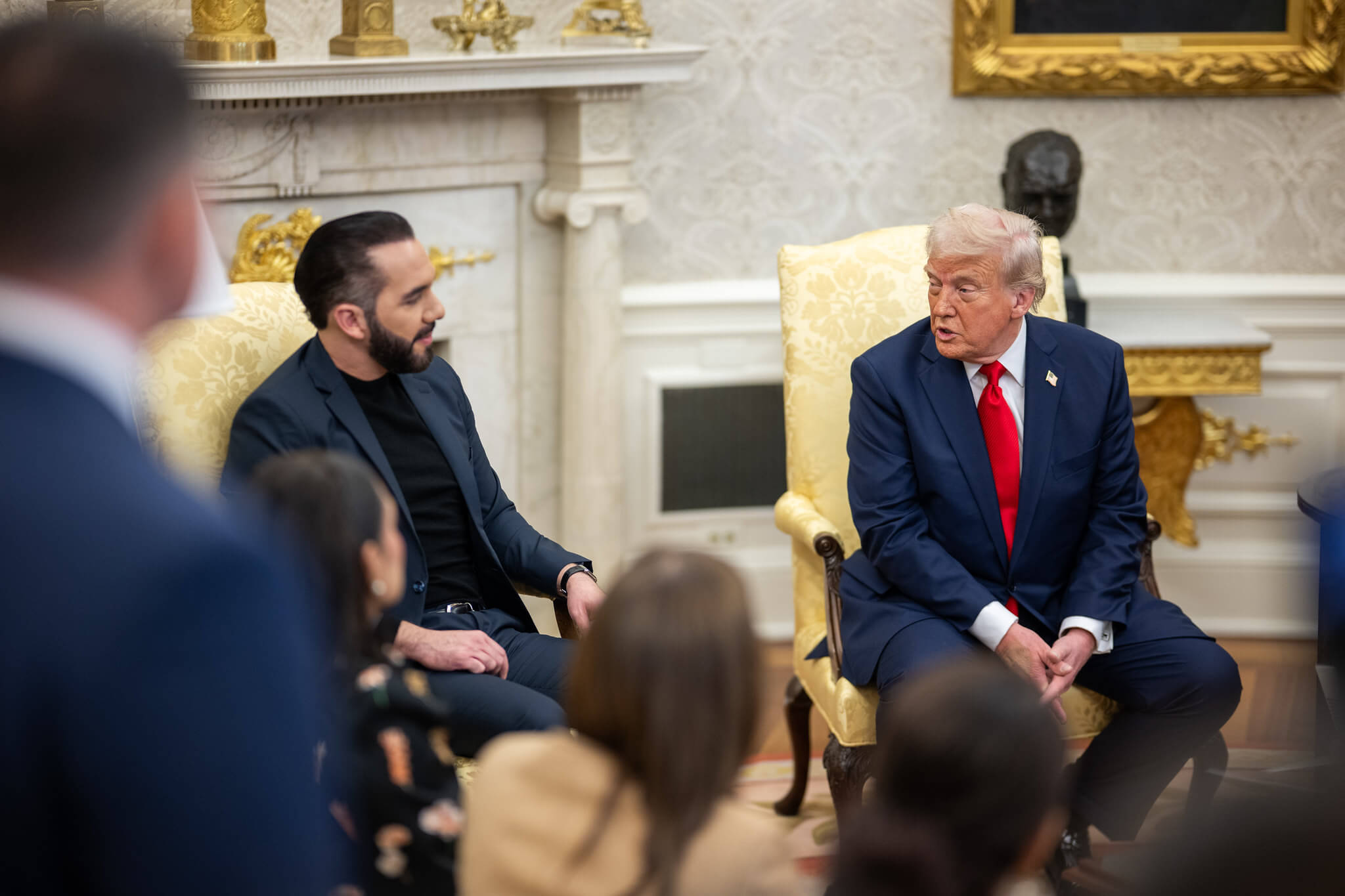What Trump’s Announcement on Hong Kong Could Mean
What options are available to the Trump administration to respond to moves by Beijing to erode Hong Kong’s autonomy?

Published by The Lawfare Institute
in Cooperation With

President Trump announced on May 29 that his administration would “begin the process of eliminating policy exemptions that give Hong Kong different and special treatment” than mainland China under U.S. law. Trump’s announcement followed Secretary of State Mike Pompeo’s decision earlier last week to determine that Hong Kong was no longer sufficiently autonomous from China under the 1992 Hong Kong Policy Act.
That 1992 act provided that U.S. trade and investment law treats Hong Kong differently from China. Last fall, concerned by Chinese actions against protestors in Hong Kong, Congress passed a new law requiring Pompeo to periodically evaluate whether Hong Kong in fact continued to remain autonomous from China as stipulated in the 1992 act. Then last week, in light of China’s plan to enact a new national security law asserting greater Chinese authority over the city, Pompeo decertified Hong Kong under the 1992 act.
Trump’s announcement was light on details about specific steps that his administration will take, kicking several decisions on implementation to working groups and other government processes.
But broadly speaking, the administration appears to be considering steps in two different domains: first, a set of steps to align Hong Kong’s treatment with that accorded to China across a range of U.S. laws and, second, a set of broader steps aimed at punishing Beijing for its erosion of Hong Kong’s autonomy.
The first set of policy decisions relates to how Hong Kong is treated under a variety of U.S. trade and investment laws. Since China assumed sovereignty of Hong Kong in 1997 under the “one country, two systems” principle, U.S. law and policy have treated Hong Kong separately from mainland China. This distinct treatment applies to customs, export controls, visas and other areas of law. For example, Hong Kong-made products have not faced the tariffs that Trump has slapped on more than two-thirds of U.S. imports from China since 2018. Other examples of the difference in treatment under U.S. law abound. U.S. exports of sensitive products and “dual use” goods that have both military and civilian application can be sent much more freely to Hong Kong than to mainland China. Hong Kong citizens have historically found it comparatively easy to obtain long-term visas to come to the U.S. The U.S signed an extradition treaty with Hong Kong in 1996. The Committee on Foreign Investment in the United States (CFIUS), the interagency national security review board for foreign investments in the U.S., can treat proposed investments in the U.S. by Hong Kong-based firms different from the fashion in which it evaluates investments by mainland Chinese companies. The U.S. Federal Reserve has partial oversight of Hong Kong’s U.S.-dollar-denominated financial transaction clearing system.
Trump indicated in his statement last week that several of these differences would likely be terminated, saying that he had directed his administration “to begin the process of eliminating policy exemptions that give Hong Kong different and special treatment.” He singled out the extradition treaty and export controls as two specific areas that he would amend. And although he hasn’t said anything definitive on the subject, given Trump’s penchant for tariffs, his administration may also take steps to align U.S. tariff rates on the $6.3 billion in goods that the U.S. imports from Hong Kong with the tariffs he has imposed on China.
In implementing these changes, the administration will face a set of complex decisions about whether and how to minimize harm to Hong Kong citizens and to U.S. businesses. Over the past several years, for example, Trump has steadily curbed the ability of some Chinese students, particularly advanced degree students, to get visas to study and work in the U.S., including new restrictions announced last week. Imposing similar restrictions on students from Hong Kong would align U.S. policy with that toward China, but much of the cost would presumably be borne by Hong Kong students who could no longer come to America. This would subject Hong Kong students already facing increased repression from China to the same restrictions on studying and working in the U.S. that affect their peers in mainland China. On the trade front, the U.S. runs a massive trade deficit with China but runs a $30 billion trade surplus in goods with Hong Kong. Should Hong Kong retaliate against any potential new U.S. tariffs on imports, U.S. exporters could stand to lose. The complexity of these decisions likely explains why Trump delegated to the relevant corners of his administration many of the details of his planned retaliation.
The second set of policy choices the Trump administration is considering are broader steps to punish Beijing for its erosion of Hong Kong’s autonomy. Here, Trump’s remarks last week included a statement that he will “sanction PRC [People’s Republic of China] and Hong Kong officials directly or indirectly involved in eroding Hong Kong’s autonomy.” Targeted sanctions against individual Hong Kong and Chinese officials are unlikely to have much economic impact on the individuals in question—few such officials likely keep significant assets in the U.S.—but they will send a diplomatic and political signal of U.S. condemnation. Trump also announced that, in response to China’s recent moves toward Hong Kong, he would direct his administration to explore whether to end the current U.S. practice of allowing Chinese companies to list shares on U.S. markets without having to provide U.S. regulators with audit details. In recent weeks, Sens. Chris Van Hollen and Pat Toomey have introduced measures in Congress that would also impose broader sanctions on Chinese banks and companies involved in eroding Hong Kong’s autonomy.
These moves entail potential legal consequences. But they also raise the broader question of whether, if Hong Kong loses some of the pillars of its special economic status, U.S. companies will continue to use Hong Kong as a regional base. It’s certainly possible they would respond to a harsher posture toward Hong Kong by moving to Singapore and other countries in the region, something some U.S. firms have already been considering. U.S. companies have a variety of factors to weigh in making that decision, including the severity of the U.S. government measures as well as the severity of China’s crackdown on Hong Kong’s autonomy.
For China, the stakes are significant. But the Chinese Communist Party appears committed to its posture toward Hong Kong. Chinese President Xi Jinping’s rising authoritarianism and the overall tensions in the U.S.-China relationship mean that any new U.S. pressure will face an uphill battle in dissuading China from its growing bid to terminate Hong Kong’s autonomy. Xi will likely view U.S. measures as costs worth bearing to assert effective Chinese rule over the territory.
But U.S. policy changes can damage Beijing’s longer term economic prospects. Hong Kong continues to play an outsized role in raising money for China and as a hub for China’s outward-facing global investments. Changes in U.S. law toward Hong Kong as a result of the decertification are not likely to immediately affect China’s ability to raise capital through Hong Kong or to impact China’s ability to use Hong Kong as a center for its global investment ambitions. But Hong Kong is an effective financial conduit for China because of its strong legal regime and the fact that global banks and companies have invested heavily in Hong Kong as a financial center over many years. Policy shifts that discourage investment and encourage banks and companies to move their operations to Singapore and other regional hubs would impose a meaningful cost on China over the longer term.
Of course, China’s erosion of Hong Kong’s autonomy and the U.S. response come at a time when tensions between the U.S. and China have risen sharply in the wake of the coronavirus pandemic. Any U.S. measures against China over Hong Kong will be just the most recent in a set of measures that increase U.S. pressure on China, including Trump’s tariffs, multiple new export controls, measures against Huawei and other Chinese tech companies, and increased U.S. law enforcement investigations of Chinese influence in the U.S. And with President Trump and Democratic presidential candidate Joe Biden increasingly competing in the November election over who is better positioned to defend U.S. interests against China, any measures against Hong Kong are more likely to be a midpoint than an end in the ratcheting-up of coercive economic measures between Washington and Beijing.





